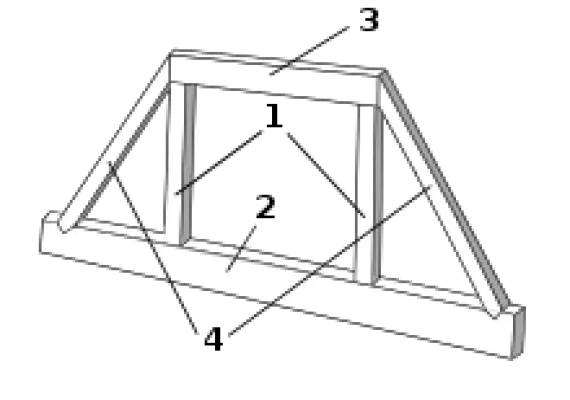What Is Wind Bracing?
What Is Wind Bracing?
Wind bracing is a technique used in construction to provide stability and support against wind forces.
It involves connecting two or more structural components together with either rigid steel framing connectors, bolts, ties, timber wall plates, diagonally placed tie rods or other bracing systems.
Wind bracing increases the rigidity of the entire structure by allowing them to resist horizontal forces acting on them due to strong winds.
This additional resistance helps prevent the structure from buckling or collapsing.
Wind bracing can often be seen in taller buildings, bridges and chimneys as it strengthens their structures against influences from high winds and seismic activity.
What Are The Four Types Of Wind Bracing?
Wind bracing helps to support a structure during high winds and storms. There are four main types of wind bracing commonly used, which include lateral steel bracing, tie-rod bracing, diaphragm action bracing and cross-braced frames.
- Lateral steel brace walls use exterior columns and diagonal braces to resist the sideways force of strong winds.
- Tie-rod bracing is made up of multiple cables that are connected between two wall panels or two opposite faces of a column, creating tension between the walls or columns.
- Diaphragm action creates shear forces through roof & floor diaphragms that transfer the load from one side of the building to another along with other vertical elements such as wall studs and roof trusses.
- Finally, cross-braced frames use diagonal members in both directions to create an X shape that effectively transfers loads from one portion of a structure to another for added strength.
How Do You Install Wind Bracing?
Installing wind bracing requires carefully following the installation instructions.
- Generally, it involves mounting j-bolts into the foundation or other anchoring points capable of supporting loads in excess of 8,000 lbs.
- Next, tension rods are connected to the j-bolts and secured with nuts before being tightened to set proper tension.
- Wind braces should be located at least 6 feet from any opening that could allow air flow and installed as tight as possible without causing structural damage or overstressing components.
- Afterwards, any connections should be sealed with caulk or sealant to prevent air leakage and final inspection is recommended to ensure correct installation.
Why Is Wind Bracing Needed?
Wind bracing is an important and necessary construction technique used in the building industry to maintain the structural integrity of structures during periods of high wind speeds.
This method is utilized in order to prevent buildings from swaying, collapsing or shifting due to impact caused by strong winds.
Wind bracing works by connecting components of a structure together with solid metal bars, creating a latticework-like system which acts as additional support for the structure and keeps it stable even when exposed to powerful gusts of wind.
In addition, it increases the overall strength of a structure, enabling it to withstand natural disasters such as hurricanes, cyclones and tornadoes.
How Wind Bracing Is Achieved In Framed Construction?
Wind bracing in framed construction is achieved by arranging diagonal members between the vertical members of a frame to provide stability against any wind-related forces.
The angle and length of these members are usually determined by a structural engineer depending on the height, size, and shape of the building’s frame and its location in terms of prevailing wind direction.
The diagonal members provide stability against such horizontal loads, thereby allowing the frame to better withstand external impacts.
Additionally, tying all frames together using steel ties at critical locations can help efficiently distribute loads among them further strengthening the entire structure.
Why Is Wind Bracing Needed For A Steel Frame?
Wind bracing for steel frames is important for maintaining the structural integrity of tall buildings.
Wind bracing helps to prevent swaying caused by strong wind gusts, as well as providing stability during earthquakes or other seismic events.
Without adequate wind bracing, steel frame structures can suffer excessive bending and twisting due to these forces, leading to distortion or even collapse.
Moreover, any displacement at the top of a structure places additional stress on its foundations, so effective wind bracing is essential in preventing both minor and major damage.

